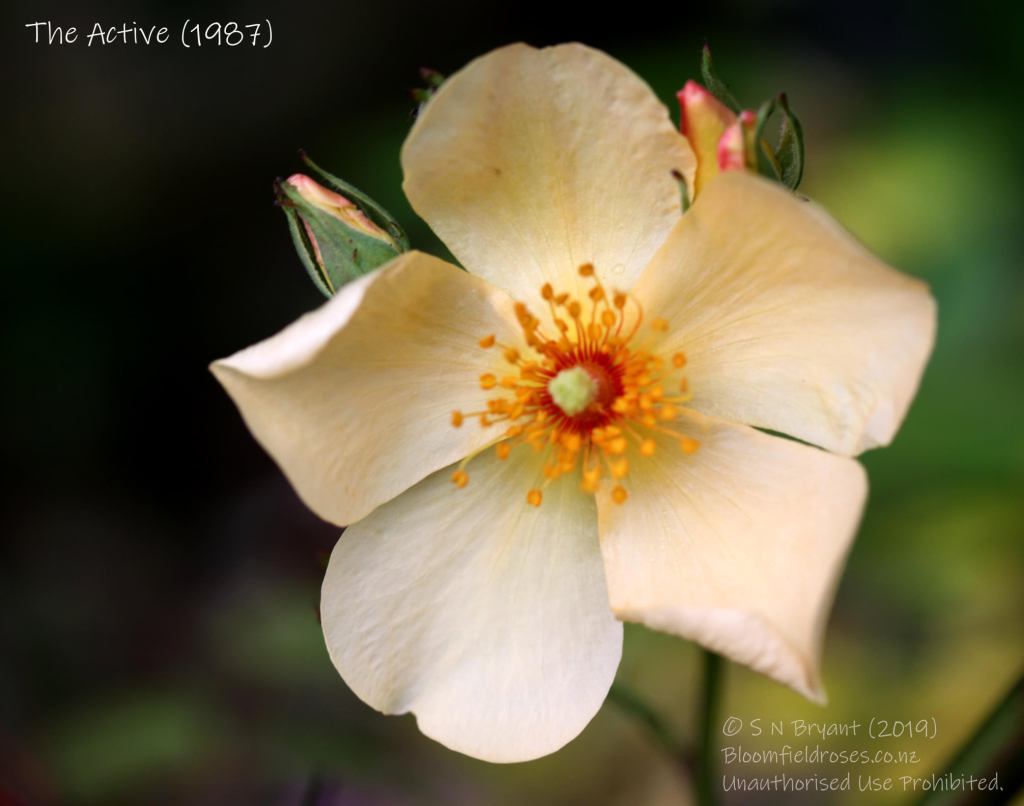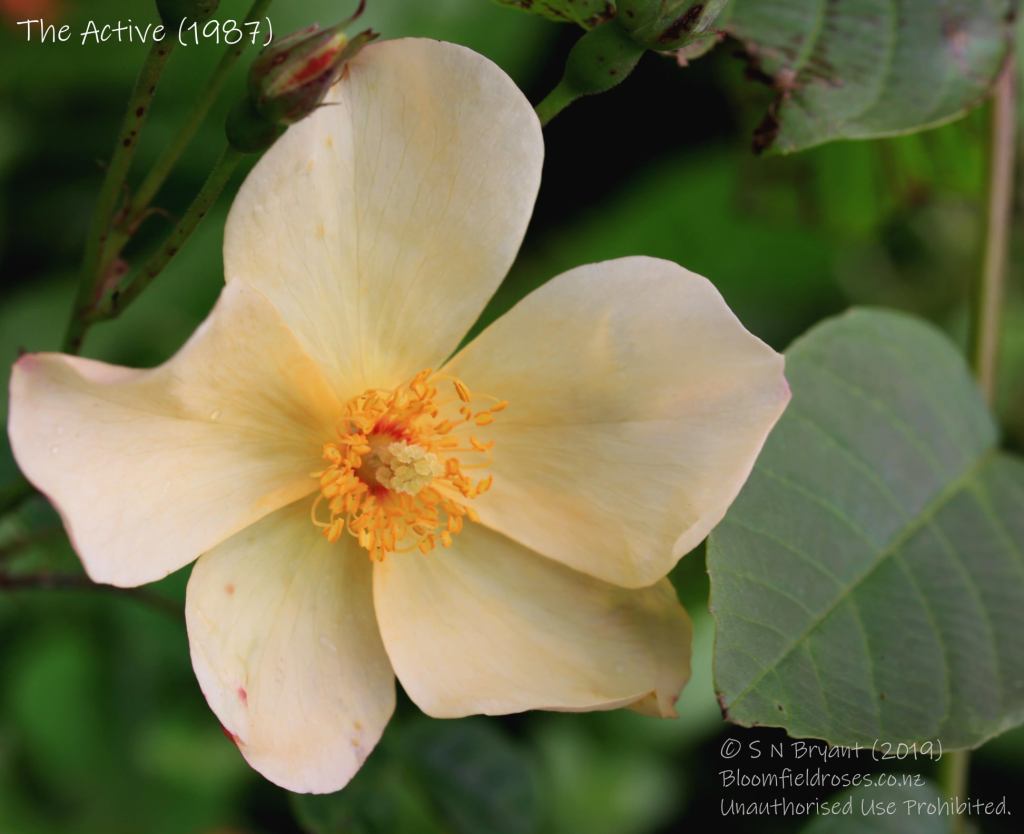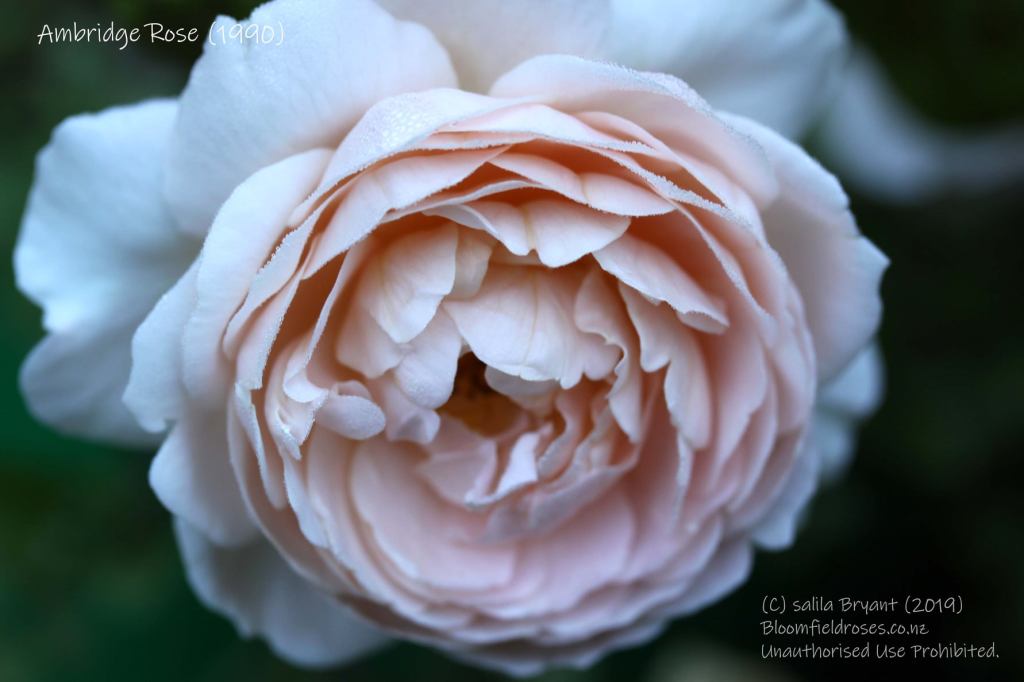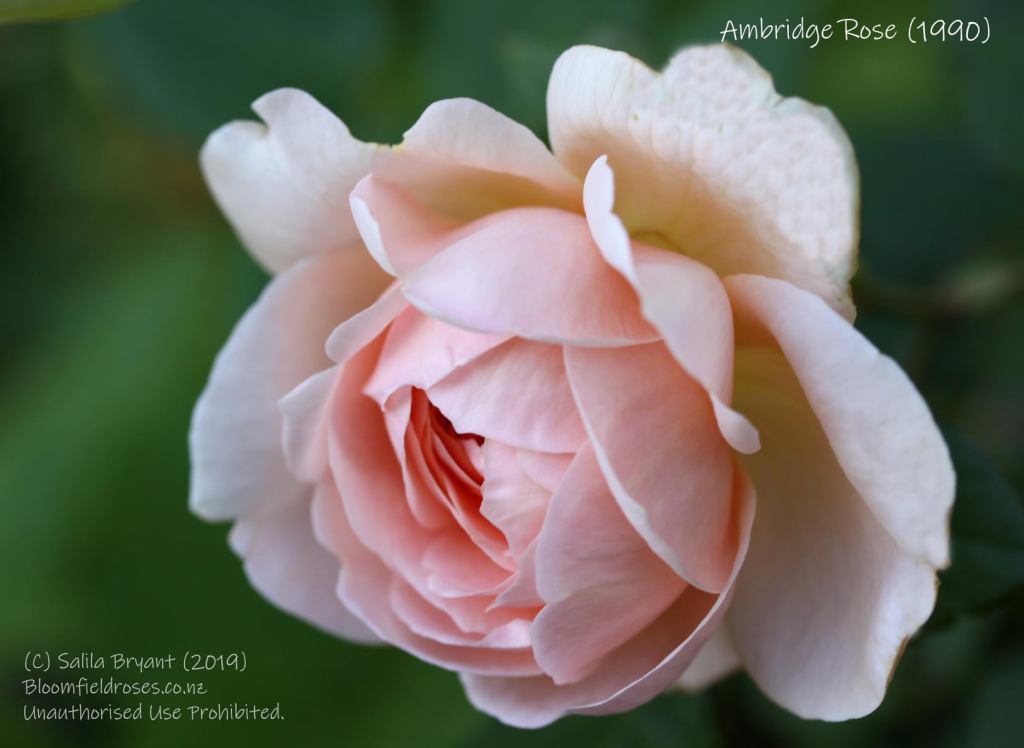The oldest, undisputed image of a wild rose known to us so far is on a painting of some 3,500 years ago now famously known as ‘Blue Bird Fresco’ found in 1923 at the Palace of Knossos.

Blue Bird Fresco
Knossos
With a very long history of human civilisation which began as the first Neolithic settlement at circa 7000 BCE, Knossos is considered the oldest city in Europe. About 5 km away from the north central coast of Crete, the city was located on the left bank of the Caeratus—a small stream which falls into the sea on the north side of the island. According to legend, Knossos was believed to be founded by Minos, the mythical king of Crete. The locality was associated with Jupiter—the most interesting legend of Greek mythology—who was said to have been born, married, and buried in the vicinity. It is believed the Neolithic people arrived probably from overseas by boat built first a succession of wattle and daub villages at the hill.

Knossos Region
The palace and the surrounding locality were built around 2000 BC to house about 18,000 people and its peak after 1700 BC about 100,000 people lived in the city. It is believed that the first Cretan palaces including the ones in Knossos were built after circa 2000 BC, during the early part of the Middle Minoan period. Dwellers of these palaces held a greater wealth and political and religious authority. The original settlements were believed to be destroyed by earthquakes (to which Crete is prone to) during Middle Minoan II, sometime before c. 1700 BC. By c. 1650 BC, they rebuilt the town on a grander scale. The period between 1650 and 1450 BC regards the height of Minoan prosperity.
The Palace of Knossos


Throne Room at the Palace of Knossos
The British archaeologist, Sir Arthur Evans (1841-1951) unearthed the ‘Palace of Knossos’ in early 1910s. The palace was by far the largest, covering three-acres with its main building alone and the premises expands to five-acres when it’s out-buildings are considered. The chief building is the Great Palace known as ‘House of Minos’ in which had stores occupied of sixteen rooms. In those rooms there were large earthen storage jars (known as pithoi) up to five feet tall used to store oil, wool, wine, and grain. The palace had several rooms oriented towards north and south direction. Among them was the throne-room with some well-preserved wall paintings and a small bathroom augmented with drainage and water-supply systems. The palace theatre was large enough to seat 400 spectators and a rectangular orchestral area was probably used for religious dances.

Sir Arthur Evans (1841-1951)
In 1923 Sir Evans excavated the ‘House of the Frescoes’, a small Minoan building constructed in Neopalatial Period (1700-1450 BC), to the west of the palace at Knossos. The building derives its name because of its famous frescoes, which are among the most outstanding of the Minoan era. It was believed to be destroyed by an earthquake. Evans found fragments of frescoes in a large deposit in layers. It took five long weeks to remove the frescoes in eighty-four trays. The restored frescoes are now in display in the Herakleion Museum.
In 1928 Evans identified three separate scenes of Frescos—two with blue monkeys and one with a blue bird, and it is believed now that they belong to a single continuous panel known as the ‘Monkeys and Birds Frieze’. The original purposes of the paintings were not botanical, but rather magico-religious, pharmacological, or decorative.
Blue Bird Fresco
The most famous of three was the Blue Bird Fresco, that contained a painting of a blue bird, a rose, an iris, a lily, and another plant. Evans identified the bird as ‘European Roller’ (Coracias garrulous), the lily as the ‘pancratium lily,’ the iris as a ‘dwarf Cretan iris’ and the remaining plant was recognised as ‘wild pea or vetches’. But the wild rose of the fresco was not identified.

Evans hired a team of artists—Émile Gilliéron (1850-1924) and his son, Émile (1885-1939)—from Switzerland to assist the restoration. They repainted the most of the Blue Bird Fresco but left a part of the original rose unaltered. There were reservations about the accuracy of the wild rose repainted by Gilliéron. While the originally painted rose had flowers of five overlapping petals in faded pale pink and slightly yellowed with age, in contrast, the restored flowers had flat, six-petaled, medium yellow-pink roses that lacked the delicate rendering of the original. Gilliérons made another mistake by restoring one of the monkeys as a blue boy gathering saffron. But the part of blue tail left was a visual indication of the original painting of a blue monkey mistaken as a blue boy.
Incorrect restoration made the identification of the wild rose difficult. Various attempts have been made to identify this rose since 1928 and a few of the suggestions included Rosa canina, R. corymbifera Borkh, R. sancta Richard syn.R. richardii. None of the above roses met the criteria of having three leaflets with prominent veins and grows on rocks, and has a mature height of under about 1 m. The attention was given to a few surviving fragments of the original fresco to identify the wild rose and was now identified as Rosa pulverulenta—with prominent veins on leaves and rosy-pink flowers—a native of the eastern Mediterranean region.

R. pulverulenta (syn. Rosa glutinosa) also known as the Cretan rose, is a species rose native to Mediterranean, Caucasus and western Asia. It is a compact shrub with pine-scented, sticky, oval to roundish leaflets with prominent veins and they are edged with compound, glandular teeth. A leaf is comprised of mostly five or seven leaflets in numbers. Rosy-pink flowers are 2.5 to 4 cm across with long sepals and are borne usually in pairs or solitary. Fruits are globose with bristles and turn to dark red when ripened and retains sepals. R. pulverulenta was introduced to west in the early 19th century, It is still growing in the rocky areas of western and central Crete.

In the end of 13th century BC, R. pulverulenta with pine-scented foliage and prickly hips was widely cultivated for fragrance and to produce scented oil for anointment and perfume. Pedanius Dioscorides (c. 40–90 AD), Greek physician and pharmacologist, whose work, De Materia Medica,was the foremost classical source of modern botanical terminology, remarked roses in general in Greek medicine. R. pulverulenta would have been used as a medicinal plant above its perfumery and decorative uses, therefore assumed to be drawn in the blue bird fresco.
Photo credits:
- Blue Bird Fresco – Olaf Tausch (2018), Wikimedia Commons
- Palace of Knossos – World History Encyclopedia (2019)
- Throne Room at the Palace of Knossos – World History Encyclopedia (2019)
- Sir Arthur Evans (1841-1951), drawn by Sir William Richmond (1907), Wikimedia
- ‘European Roller’ (Coracias garrulous) – Arno Meintjes
- R. pulverulenta Bloom – Salila Bryant (2020)
- R. pulverulenta hips – Royal Botanical Garden, Kew



































